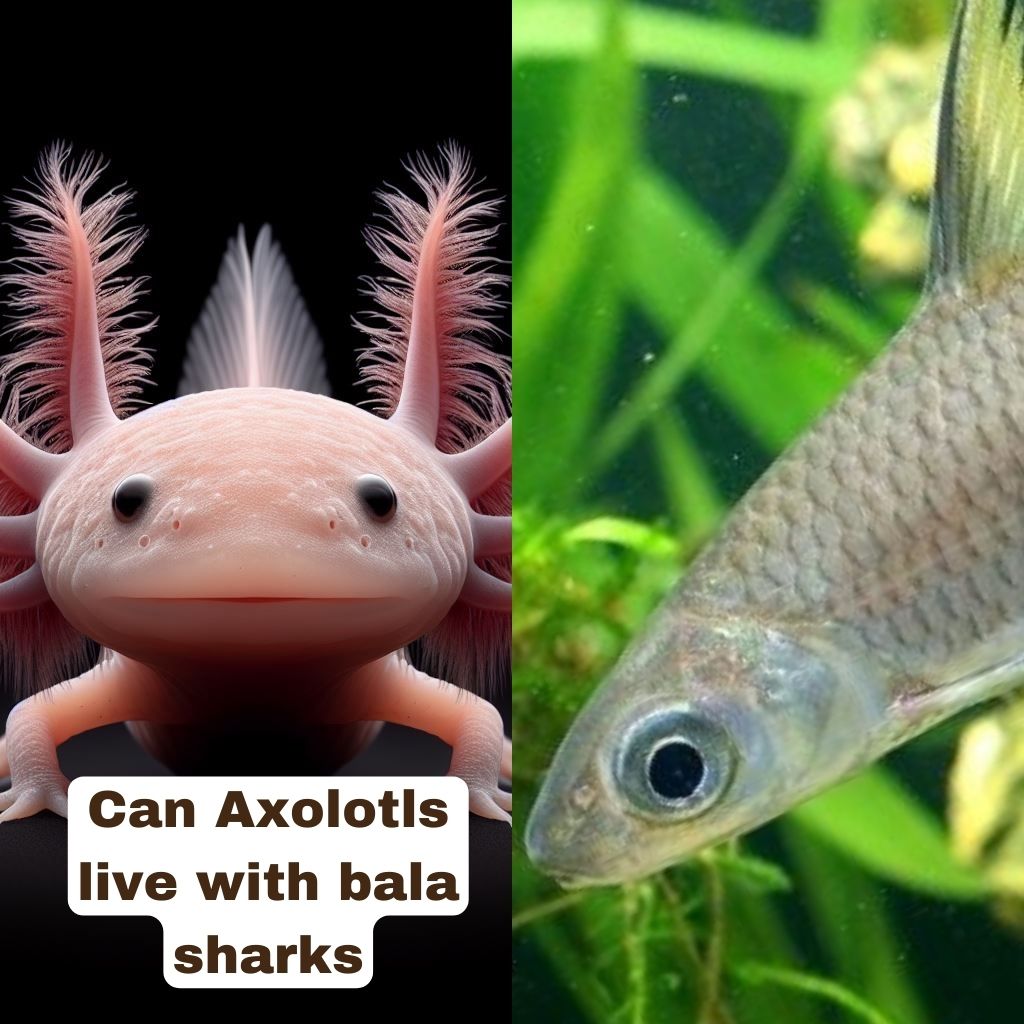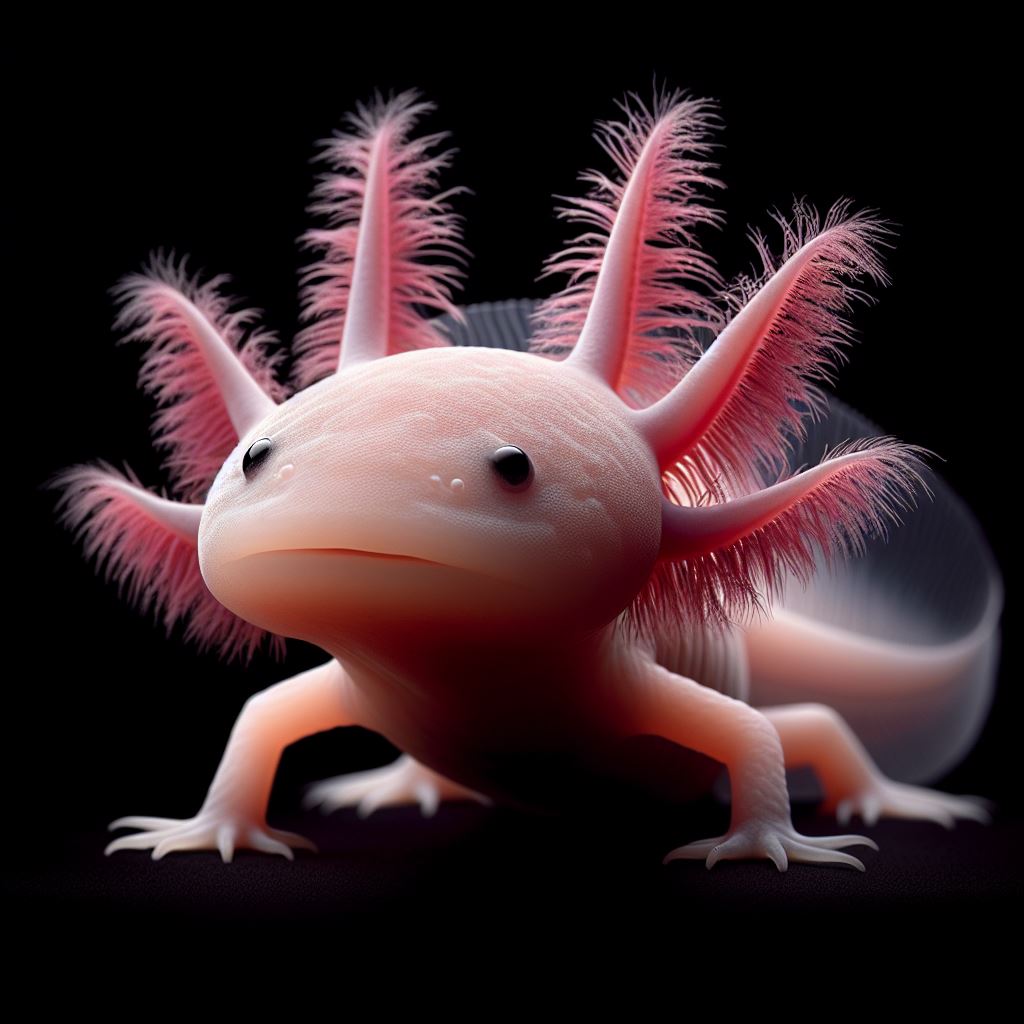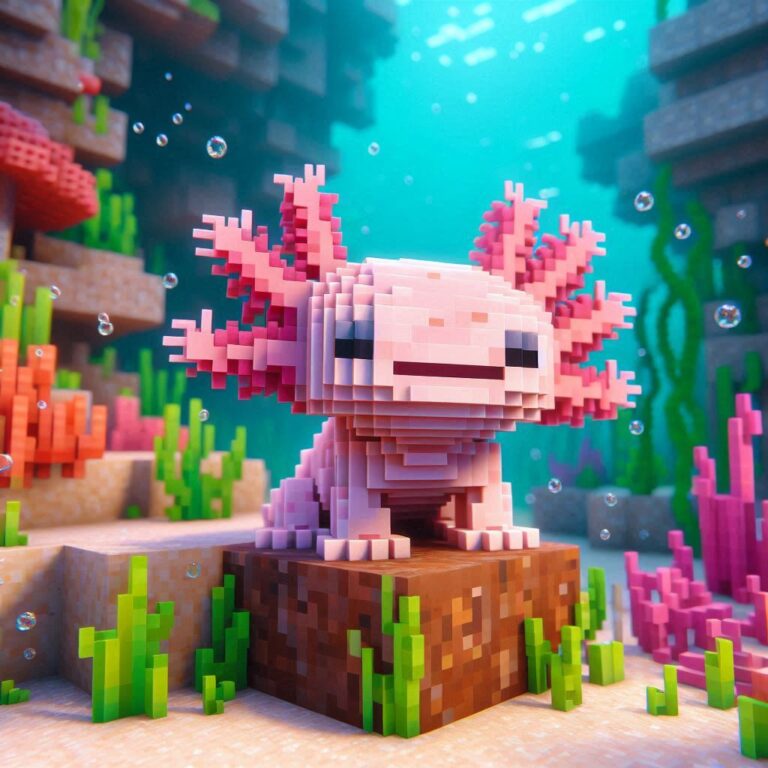
Whether axolotls can coexist with bala sharks is a question that hinges on various factors. While it’s not entirely impossible for these two species to share a tank, it’s generally discouraged due to their differing habitat requirements, behaviors, and dietary preferences. Axolotls are solitary amphibians that thrive in cooler water with specific pH levels, while bala sharks are active schooling fish that prefer warmer temperatures. Additionally, bala sharks are known to be fast eaters, which could lead to competition for food and potential stress for the slower-moving axolotls. Moreover, the risk of aggression and disease transmission between these species further complicates their compatibility. Therefore, while it might be tempting to house them together, it’s essential to consider the potential risks and challenges before attempting to create a shared habitat for axolotls and bala sharks.
Habitat Requirements: Axolotls vs. Bala Sharks
Axolotls, with their unique neotenic features, demand specialized habitats distinct from most aquatic creatures. These salamanders hail from the murky waters of Mexico’s Lake Xochimilco, thriving in cool, oxygen-rich environments. Unlike the lively bala sharks, axolotls prefer tranquil settings with minimal water flow to conserve energy. Therefore, aquarists must recreate this serene ambiance, ensuring ample hiding spots amidst plants and driftwood. Bala sharks, conversely, originate from the fast-flowing rivers of Southeast Asia, necessitating tanks with ample space for schooling behavior. While their habitats may seem worlds apart, with careful planning, it’s possible to strike a balance that accommodates the needs of both species.
Tank Size and Space Needs
The question of tank size transcends mere gallons when considering housing axolotls and bala sharks. Axolotls, although relatively small in size, require spacious accommodations due to their secretive nature and sprawling behavior. A tank of at least 20 gallons per axolotl is recommended to provide ample space for exploration and minimal stress. Conversely, bala sharks, renowned for their energetic schooling behavior, demand vast expanses to thrive. A tank of no less than 125 gallons is advised for a school of bala sharks to exhibit their natural swimming patterns without constraint. Finding a tank size that meets the diverse needs of both species can be challenging but is crucial for their well-being and longevity.
Water Parameters: pH, Temperature, and Filtration
Maintaining suitable water parameters is paramount for the health and vitality of axolotls and bala sharks alike. Axolotls prefer slightly alkaline waters with a pH ranging from 7.4 to 7.6 and temperatures around 60 to 68°F. Conversely, bala sharks thrive in more neutral to slightly acidic conditions with a pH of 6.5 to 7.5 and temperatures between 75 to 82°F. Balancing these divergent requirements necessitates careful monitoring and potentially separate zones within the tank with varied temperatures. Furthermore, robust filtration systems are indispensable to ensure optimal water quality, especially in larger tanks housing bala sharks, whose vigorous activity levels result in increased waste production. By meticulously regulating these parameters, aquarists can create a harmonious aquatic environment conducive to the well-being of both species.
Substrate and Decor Preferences
In the realm of substrate and decor, axolotls and bala sharks showcase contrasting preferences reflective of their respective natural habitats. Axolotls, renowned for their bottom-dwelling tendencies, favor soft, sandy substrates devoid of abrasive materials that could damage their delicate skin. Additionally, they benefit from an abundance of hiding spots provided by caves, plants, and driftwood, which mimic the sheltered nooks of their native lake beds. Conversely, bala sharks, with their affinity for open water and swift currents, thrive in tanks with minimal substrate, allowing for unrestricted movement. Decor elements such as rocks and driftwood should be strategically positioned to create open swimming spaces reminiscent of their riverine homes. Finding a balance between these divergent preferences ensures a visually captivating and enriching environment for both axolotls and bala sharks, fostering their natural behaviors and enhancing their overall well-being.
Bala Sharks Behavior: How It Affects Axolotls
Understanding the behavior of bala sharks is crucial when considering their compatibility with axolotls. These sleek and agile fish are known for their dynamic schooling behavior, constantly darting and gliding through the water in synchronized harmony. While this behavior may captivate aquarium enthusiasts, it can pose challenges for the more sedentary axolotls. Axolotls, with their solitary and nocturnal nature, may find the frenetic activity of bala sharks overwhelming and stressful. Constant movement and potential competition for resources can disrupt axolotls’ natural rhythms and lead to heightened stress levels. Therefore, careful consideration must be given to the behavioral dynamics between these two species before attempting to house them together in the same tank.
Social Dynamics of Bala Sharks
Bala sharks are inherently social creatures, exhibiting a strong preference for the company of their own kind. In their natural habitat, they form large schools, providing safety in numbers and facilitating efficient foraging and navigation. However, replicating these social dynamics in captivity can be challenging, especially in tanks with limited space or inadequate numbers of bala sharks. In such environments, bala sharks may exhibit signs of stress or aggression, potentially impacting the well-being of other tank mates, including axolotls. Therefore, it’s essential to provide bala sharks with the appropriate social environment, including ample space and companionship, to ensure their behavioral needs are met while minimizing potential conflicts with other species.
Axolotls’ Solitary Nature
In stark contrast to the gregarious bala sharks, axolotls are solitary creatures by nature. Originating from the ancient waters of Lake Xochimilco, these enigmatic amphibians are accustomed to a solitary existence, relying on stealth and camouflage to navigate their murky habitats. Axolotls are primarily nocturnal, preferring to hunt and explore under the cover of darkness, seeking out secluded hideaways during the day. This solitary lifestyle is deeply ingrained in their behavior and physiology, making them ill-suited for the constant activity and social interactions typical of bala sharks. Attempting to house axolotls alongside bala sharks may disrupt their natural rhythms and lead to heightened stress levels, compromising their overall health and well-being.
Potential Stress Factors
Stress can have detrimental effects on the health and longevity of both axolotls and bala sharks. For axolotls, factors such as excessive noise, bright lighting, and aggressive tank mates can trigger stress responses, leading to reduced appetite, decreased activity levels, and increased susceptibility to illness. Similarly, bala sharks are sensitive to changes in their environment, particularly disruptions to their social dynamics or inadequate space to exhibit natural behaviors. When housed together, the frenetic activity of bala sharks can overwhelm the more sedentary axolotls, causing heightened stress levels and potential conflicts. It’s essential for aquarists to carefully monitor their tank environment and minimize stressors to ensure the health and well-being of all inhabitants, creating a harmonious and enriching environment for both axolotls and bala sharks.
Dietary Differences Between Axolotls and Bala Sharks
Axolotls and bala sharks hail from vastly different ecological niches, each with their own distinct dietary requirements. Axolotls, being carnivorous amphibians, have evolved to consume a diet primarily composed of live or frozen meaty foods such as bloodworms, earthworms, and small fish. These voracious predators rely on their keen sense of smell and ability to ambush prey to sustain themselves in the wild. In contrast, bala sharks possess an omnivorous diet, feeding on a diverse array of plant matter, insects, crustaceans, and smaller fish. This dichotomy in dietary preferences presents a challenge when considering housing these species together in captivity, as meeting the nutritional needs of both can prove to be a delicate balancing act.
Feeding Habits of Axolotls
Axolotls are opportunistic feeders with a penchant for hunting live prey. In their native habitat of Lake Xochimilco, they rely on their acute senses to detect the movement of potential prey items, ambushing them with lightning-fast strikes. In captivity, axolotls exhibit similar feeding behaviors, eagerly pouncing on live or frozen foods presented to them. However, they are known to be somewhat lazy feeders, often preferring to wait for food to come to them rather than actively seeking it out. This behavior underscores the importance of ensuring that food items are within easy reach of axolotls to encourage regular feeding and prevent malnutrition.
Bala Sharks’ Omnivorous Diet
Bala sharks are opportunistic feeders with a diverse palate that reflects their omnivorous nature. In the wild, they feed on a variety of plant matter, insects, crustaceans, and small fish, exhibiting a flexible dietary strategy that allows them to adapt to changing environmental conditions. In captivity, bala sharks readily accept a wide range of foods, including commercial pellets, flakes, and frozen or live offerings such as bloodworms and brine shrimp. This versatility in diet makes them relatively easy to feed and provides aquarists with ample options for meeting their nutritional needs.
Compatibility in Feeding Times
The compatibility of axolotls and bala sharks in terms of feeding times depends largely on their individual feeding behaviors and dietary preferences. Axolotls, being nocturnal predators, are most active during the night and may prefer to feed under the cover of darkness. In contrast, bala sharks are diurnal feeders, exhibiting peak activity levels during the day. This difference in feeding schedules can potentially lead to conflicts if both species are housed together in the same tank. Therefore, careful consideration must be given to their individual feeding habits and the timing of feeding sessions to minimize competition and ensure that all inhabitants receive adequate nutrition. Providing separate feeding areas or staggered feeding times can help alleviate potential conflicts and promote harmony in a mixed-species aquarium environment.
Potential Risks of Housing Axolotls and Bala Sharks Together
While the idea of creating a diverse aquatic community may be enticing, housing axolotls and bala sharks together poses several potential risks that must be carefully considered. These risks stem from differences in habitat preferences, behavior, and dietary requirements between the two species. Axolotls, being solitary amphibians adapted to cool, still waters, may find the active and social nature of bala sharks stressful. Additionally, bala sharks’ omnivorous diet and tendency towards aggression during feeding may pose a threat to the more sedentary axolotls. Furthermore, the risk of disease transmission between the two species is heightened when they are housed together in the same tank, potentially compromising the health and well-being of both populations.
Risk of Aggression
One of the most significant risks associated with housing axolotls and bala sharks together is the potential for aggression between the two species. Bala sharks, with their fast-moving and competitive feeding behavior, may view the slower-moving axolotls as competitors for food resources. This can lead to instances of aggression, including chasing, nipping, and even injuring the axolotls. Additionally, bala sharks may exhibit territorial behavior, especially in smaller tanks with limited space, further exacerbating the risk of aggression towards axolotls. Therefore, careful monitoring and management of the tank environment are essential to minimize the risk of aggression and ensure the safety of all inhabitants.
Size Disparities
Another risk factor to consider when housing axolotls and bala sharks together is the significant size disparity between the two species. Axolotls, although capable of growing to impressive lengths, are generally smaller and more sedentary compared to the swift and agile bala sharks. This size difference can create challenges in terms of competition for space and resources within the tank. Bala sharks, with their active swimming behavior, may inadvertently intimidate or stress the more timid axolotls, leading to potential conflicts and compromised well-being. Therefore, it’s crucial to provide ample space and hiding spots to accommodate the differing needs and behaviors of both species and mitigate the risk of size-related conflicts.
Disease Transmission
The risk of disease transmission is a significant concern when housing axolotls and bala sharks together in the same tank. Both species can carry various pathogens, parasites, and bacterial infections, which may be transmitted to each other under stressful or unsanitary conditions. Axolotls, with their sensitive skin and susceptibility to fungal infections, are particularly vulnerable to disease outbreaks in crowded or poorly maintained aquariums. Additionally, bala sharks may harbor external parasites or bacterial pathogens that could pose a threat to axolotls if proper quarantine measures are not implemented. Therefore, regular monitoring of water quality, adherence to strict hygiene protocols, and quarantine procedures for new arrivals are essential to prevent the spread of disease and ensure the health and well-being of all tank inhabitants.
Temperature and Water Quality Considerations

Maintaining optimal temperature and water quality is paramount when housing axolotls and bala sharks together in the same tank. Both species have specific requirements that must be met to ensure their health and well-being. Axolotls, being cold-water amphibians, prefer cooler temperatures ranging from 60 to 68°F (15 to 20°C). In contrast, bala sharks are tropical fish that thrive in warmer waters, with temperatures ranging from 75 to 82°F (24 to 28°C). This disparity in temperature preferences can present challenges for aquarists, requiring careful planning and management to create a suitable environment for both species.
Ideal Temperature Range for Axolotls
Axolotls are native to the cool, oxygen-rich waters of Lake Xochimilco in Mexico, where temperatures remain relatively stable year-round. In captivity, axolotls thrive in temperatures ranging from 60 to 68°F (15 to 20°C), with cooler temperatures being preferable to warmer ones. Maintaining a consistent temperature within this range is essential for the health and well-being of axolotls, as fluctuations outside of their preferred range can stress the animals and compromise their immune systems.
Bala Sharks’ Preference for Warmer Water
In contrast to axolotls, bala sharks are tropical fish that prefer warmer water temperatures ranging from 75 to 82°F (24 to 28°C). Originating from the fast-flowing rivers of Southeast Asia, bala sharks are accustomed to the warm, tropical climates of their native habitats. Maintaining temperatures within this range is crucial for the health and vitality of bala sharks, as colder temperatures can slow their metabolism and increase their susceptibility to stress and disease.
Maintaining Water Quality for Both Species
In addition to temperature considerations, maintaining optimal water quality is essential for the health and well-being of both axolotls and bala sharks. Both species are sensitive to changes in water parameters such as pH, ammonia, nitrite, and nitrate levels. Regular water testing and maintenance are necessary to ensure that these parameters remain within acceptable ranges. Additionally, providing adequate filtration and performing regular water changes are essential for removing waste and maintaining water clarity. By maintaining optimal water quality, aquarists can create a healthy and thriving environment for both axolotls and bala sharks, promoting their overall health and well-being.
FAQs
Q. Can axolotls and bala sharks live together in the same tank?
A. It’s generally not recommended to house axolotls with bala sharks due to differences in habitat requirements and potential conflicts.
Q. What size tank is suitable for housing axolotls and bala sharks together?
A. A large tank of at least 75 gallons or more would be necessary to accommodate the space needs of both species.
Q. Do axolotls and bala sharks require similar water parameters?
A. Axolotls prefer cooler water with a pH around 7.4-7.6, while bala sharks thrive in slightly warmer water with a pH of 6.5-7.5, making it challenging to maintain ideal conditions for both.
Q. Are axolotls compatible with the social behavior of bala sharks?
A. Axolotls are solitary creatures and may become stressed or aggressive in the presence of active and schooling fish like bala sharks.
Q. What do axolotls eat compared to bala sharks?
A. Axolotls primarily consume live or frozen meaty foods like bloodworms and earthworms, while bala sharks have an omnivorous diet consisting of pellets, flakes, and occasional live foods.
Q. Can bala sharks outcompete axolotls for food?
A. Bala sharks are known to be fast and aggressive eaters, potentially leaving little food for slower-moving axolotls.
Q. What are the risks of housing axolotls and bala sharks together?
A. Risks include aggression from bala sharks towards axolotls, potential stress for axolotls due to active swimming patterns of bala sharks, and differences in dietary needs.
Q. Do axolotls and bala sharks carry diseases that could affect each other?
A. While both species can carry diseases, the risk of disease transmission between them is higher when they are kept together in the same tank.
Q. How can temperature differences affect axolotls and bala sharks?
A. Axolotls may struggle in warmer temperatures preferred by bala sharks, leading to stress, decreased appetite, and susceptibility to illness.
Q. What measures can be taken to minimize risks when housing axolotls and bala sharks together?
A. Providing ample hiding spots, closely monitoring behavior, maintaining excellent water quality, and ensuring adequate feeding for all inhabitants can help mitigate potential conflicts and health issues.
Conclusion
In conclusion, while the idea of housing axolotls and bala sharks together may seem appealing, it’s essential to recognize and address the numerous challenges and potential risks involved. From differences in habitat preferences and behavior to variations in dietary requirements and temperature preferences, accommodating the diverse needs of both species can be a complex endeavor. However, with careful planning, diligent monitoring, and proactive management, it is possible to create a harmonious and enriching environment that promotes the health and well-being of both axolotls and bala sharks.

Hassan Shah carries over four years of hands-on expertise in caring for axolotls, guided by his cherished companion ‘Little Bruno,’ a thriving axolotl under his attentive care for three years.



